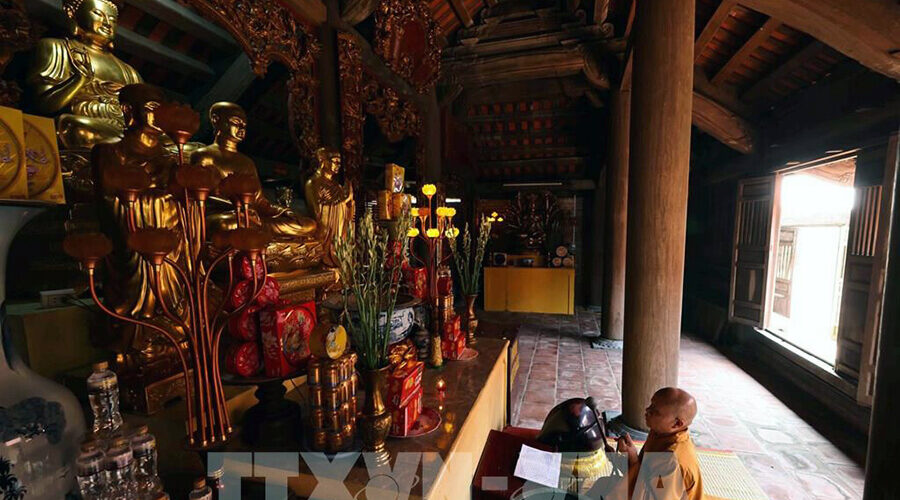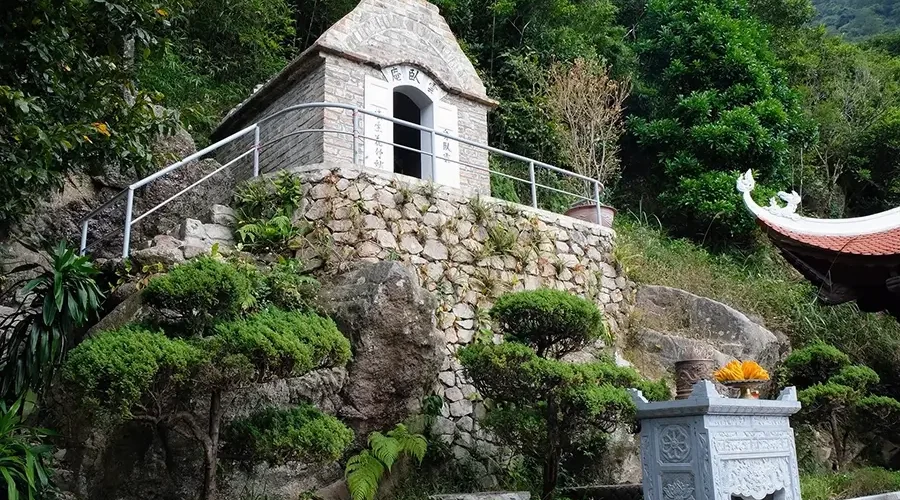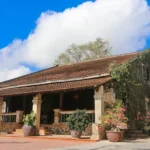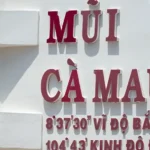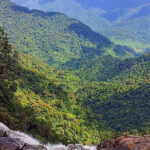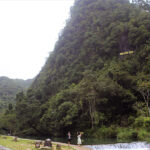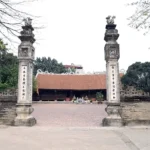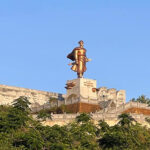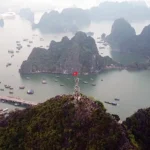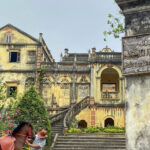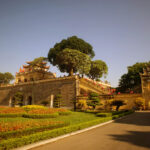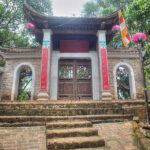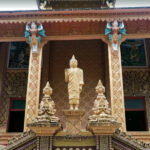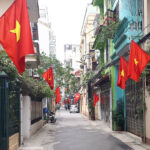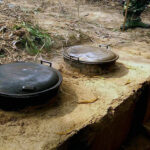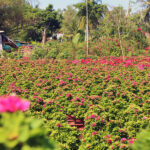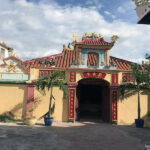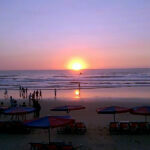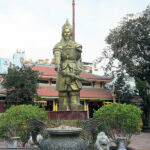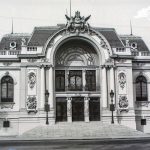Ngoa Van Pagoda is one of the important relics located in the spiritual territory of Truc Lam Yen Tu. This place has an extremely special position in the spiritual and cultural life of the Vietnamese people. It was the last stop in the monkhood of Emperor Tran Nhan Tong. With sacred historical meanings and natural beauty that has remained forever, it has contributed to creating a unique and impressive Ngoa Van Pagoda as it is today.
Overview about Ngoa Van pagoda
Ngoa Van Pagoda is located in An Sinh and Binh Khe communes, Dong Trieu town, Quang Ninh province. In Vietnamese language, Ngoa Van Pagoda means “temple on the clouds”. At an altitude of more than 500m above sea level, the pagoda has a beautiful location, leaning against the cloud-covered Ngoa Van peak.

With two mountain ranges embracing both sides, in front is a small mountain as a screen, in the distance is a valley with the winding Cam River. The pagoda was built during the Tran Dynasty and restored during the Later Le Dynasty.
Ngoa Van is a sacred place of Truc Lam Buddhism
According to historical records, in 1295, Emperor Tran Nhan Tong was ordained as Buddhist monk. In May 1307, he went to practice at a hermitage on top of Ngoa Van – a high peak covered in clouds all year round located on Bao Dai Mountain in the sacred Yen Tu range. On November 1, 1308, he entered nirvana at Ngoc Van hermitage (now in An Sinh and Binh Khe communes, Dong Trieu town, Quang Ninh province). After Tran Nhan Tong passed away, later generations rebuilt Ngoa Van hermitage to worship him, and also built pagodas and other religious structures to worship Buddha and practice Buddhism.

Today, Ngoa Van relic is a large pagoda and tower complex arranged in 3 layers on Bao Dai mountain. The lowest layer is 15 relics at the foot of the mountain such as: Tan Long old forest, Phu Am Tra, Do Kieu, Thong Dan, Da Chong, Ba Bac… These relics are connected by a winding road that gradually runs up to the top of the mountain.
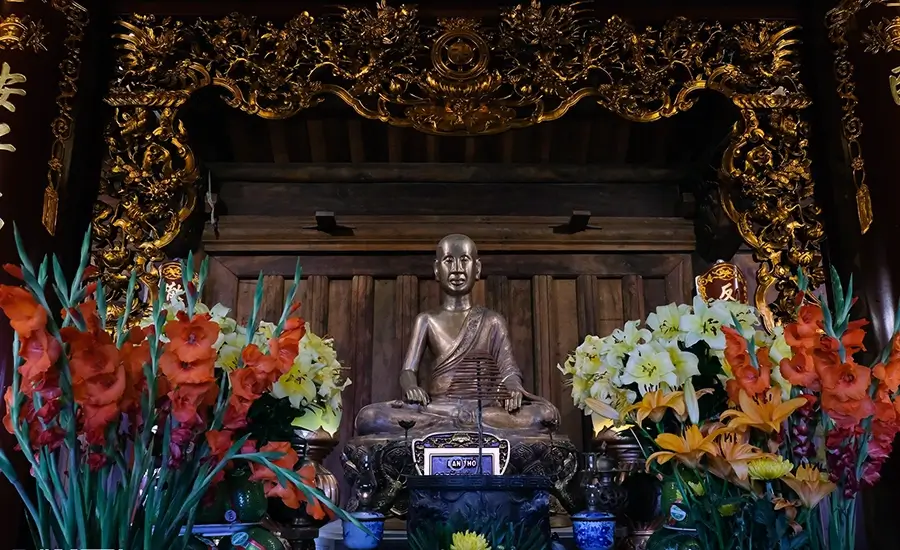
statue of Emperor Tran Nhan Tong
The second layer of the relic site is Ngoa Van Trung pagoda located on the southern slope of Bao Dai mountain. After being restored and built on the old pagoda’s foundation in 2014, Ngoa Van Trung today is a spacious pagoda, simulating the architecture of the old pagoda built during the Le Trung Hung period, and is made up of two main buildings: front hall and back hall.

Ngoa Van Trung pagoda is also considered the central area of the Ngoa Van spring festival (taking place from the 9th of January to the end of the 3rd lunar month every year). Important rituals of the festival such as the spring opening festival, the ceremony to pray for national peace and people’s safety… are all held at Ngoa Van Trung pagoda.

The third layer, also the highest layer of the Ngoa Van relic, this mystical mountain peak, covered with clouds all year round, is where many sacred vestiges related to the last days of the monkhood of Tran Nhan Tong are preserved, such as Ngoa Van Thuong Pagoda, Ngoa Van Hermitage – where, according to legend, Emperor Tran Nhan Tong entered nirvana on a large rock in the posture of a lying lion, Tran Nhan Tong’s Buddha Tower – where part of the Buddha’s relics are kept, and Ban Co Tien located on the highest peak, overlooking a beautiful mountain area.
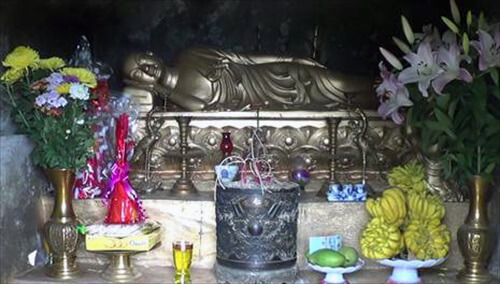
Ngoa Van – A masterpiece of pristine nature
To conquer Ngoa Van, in addition to walking pilgrimage, visitors can take the cable car for about 220,000 VND round trip and it only takes about 15 minutes to reach near Ngoa Van Trung Pagoda.

a view from a cable car to Ngoa Van
Not only preserving the sacred vestiges of King Tran Nhan Tong, Ngoa Van relic site is also a place with pristine and beautiful natural scenery. Located in the Dong Trieu arc area, Ngoa Van is surrounded and embraced by lush green mountains. The vegetation here is almost intact with many rare species of plants and animals.

a view from Ngoa Van
Coming to Ngoa Van, people have the opportunity to admire hundred-year-old pine trees and vast bamboo forests.
Source: collected by An
Follow us for the best deal with Vietnam package tours and visa services!

